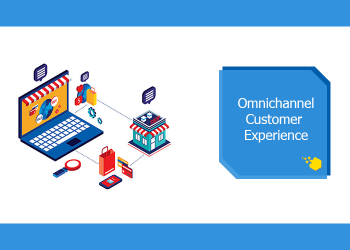Omnichannel features are no longer nice-to-haves. According to McKinsey, Omnichannel eCommerce is now critical for retailers; it’s “a requirement for survival.”
“More than one-third of Americans have made omnichannel features such as buying online for in-store pickup part of their regular shopping routine since the pandemic, and nearly two-thirds of those individuals plan to continue.”
Source: McKinsey
So if you haven’t already invested in developing a seamless customer experience across multiple channels, now is the time. This article will share some information on how to do that and three tools to make it easier.
What is Omnichannel eCommerce?
Omnichannel eCommerce is a marketing strategy that develops multiple channels for customers to interact and transact with a brand.
Multichannel vs. Omnichannel
Multichannel and omnichannel marketing are similar, but the key difference is that an omnichannel eCommerce approach prioritizes creating a seamless, personalized experience. Shoppers can take action on one channel, and the result of that action will carry over to all other channels.
For example, customer support reps will have complete visibility into a shopper’s experience when someone calls for help. Other than confirming their identity, the shopper won’t have to go through the process of establishing who they are all over again.
Unlike multichannel marketing, omnichannel marketing:
- Focuses the company’s overall performance
- Delivers a consistent message and experience across channels and devices
- Allows for multiple touchpoints in the process of a purchase
- Prioritizes the reduction of effort necessary for a customer when going from one channel to another during the customer journey[1]
Benefits of Omnichannel eCommerce
Research shows that omnichannel marketing leads to:
- Improved trust
- Increased customer loyalty
- Higher customer conversion rates
- Great opportunities for cross-selling[2]
One reason for those benefits is that it enables a higher level of eCommerce personalization. And those factors ultimately lead to increased sales growth.
In fact, according to a 2017 study of 24,000 shoppers, shoppers who interact with a company through multiple channels are more valuable than those who spend time on a single channel. The study found that omnichannel shoppers spent 4 percent more in-store and 10 percent more online.[3]
How to Implement an Omnichannel Approach
There are three things you need for an omnichannel approach to eCommerce marketing:
- All customer data should be accessible from one location
- All inventory and orders should be accessible from one location
- Marketing metrics and incentives should align with the goals of an omnichannel approach
If you also have brick and mortar locations, it will also be necessary to equip your stores with the technology needed to unify your data.
Three Tools to Enable Omnichannel eCommerce
Analytics
Databox will enable you to collect data from any tool and track it from any device. That way, you can focus on KPIs relevant to your omnichannel strategy and provide all data in a single pane of glass.
Remarketing
Website visitor identification software like LeadPost will enable you to collect more data on your visitors, even if they don’t convert. You can use this for data enrichment, email retargeting, and better eCommerce email marketing.
You can also use LeadPost to deliver direct mail, email, and remarketing ads as part of your overall omnichannel approach to eCommerce.
Communication
Communication platforms like Intercom allow you to offer omnichannel support across multiple channels. You can also use integrations like Delighted to collect and aggregate feedback across various channels.
Omnichannel eCommerce is a Must
Omnichannel marketing is a requirement for continued success in eCommerce. The tips and tools we’ve shared here will help you begin or improve your omnichannel approach so that you see increased sales growth.
[1] Berman, B., & Thelen, S. (2018). Planning and implementing an effective omnichannel marketing program. International Journal of Retail & Distribution Management, 46(7), 598-614.
[2] Ibid.
[3] Ibid.
